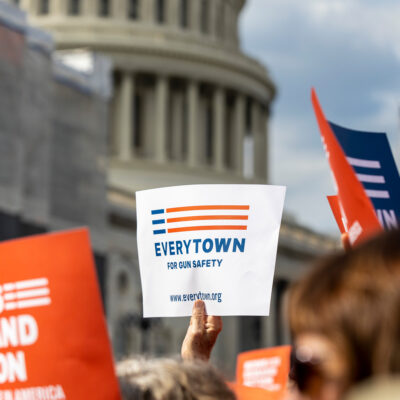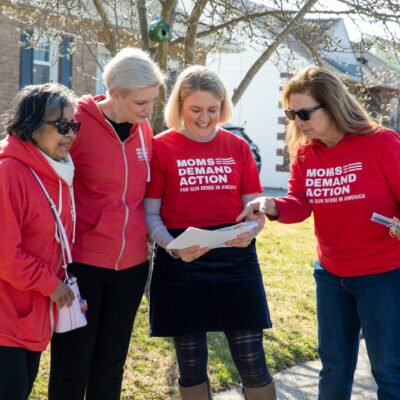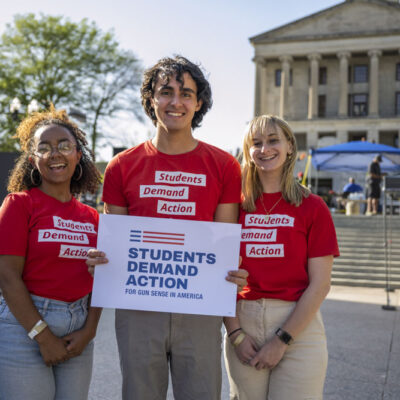Guns in Schools
What is the problem?
We need meaningful strategies to keep our nation’s schools safe. School communities must be provided with the tools they need to intervene and prevent school-based gun violence.
It’s time for leaders to pursue the approaches that have been shown to be effective to keep guns out of schools. These approaches include addressing students’ health, empowering teachers and law enforcement to intervene if students show warning signs, improving schools’ physical security in a targeted way, and keeping guns out of the hands of people who shouldn’t have them. We can’t let risky ideas, like arming teachers, dominate the debate on school safety. An armed teacher cannot transform into a specially-trained law enforcement officer in a moment of extreme duress.
Why is it an issue?
We can prevent gun violence in schools.
Safe schools are cornerstones of American communities—places where our children’s days are brightened and horizons are opened. Students and staff fear school shootings. From 2013 through 2021, Everytown identified a total of 848 incidents of gunfire on school grounds. Of these incidents, 573 occurred on the grounds of a preschool, elementary, middle, or high school, resulting in 188 deaths and 392 people wounded. Nearly half (at least 46 percent) of the victims in these incidents were students.We need meaningful action to keep our schools safe—action that addresses what we know about gun violence in America’s schools and prevents it from occurring in the first place.
By the numbers
95%
In the 2005–06 school year, 40 percent of American public schools drilled students on lockdown procedures in the event of a shooting; by the 2015–16 school year, 95 percent did.
2/3
Two in three incidents of gunfire on school grounds from 2013 to 2021 occurred in schools where one or more racial and/or ethnic minorities constituted a majority of the student population.
76%
The US Secret Service found that roughly three-quarters of school shooters acquired their firearm from the home of a parent or close relative.
100%
In all incidents of targeted school violence—100 percent—there were warning signs that caused others to be concerned.
What are the solutions?
-
Stop Arming Teachers
To prevent tragedies we must implement strong school safety solutions, but arming teachers is not one of them. School shootings are chaotic and in these moments of chaos, we cannot ask teachers to stop a shooter, potentially a current or former student.
-
Reconsider Active Shooter Drills
95% of American public schools drill students on lockdown procedures. Yet, there is almost no research affirming the value of these drills for preventing school shootings or protecting the school community when shootings do occur.
-
Threat Identification and Assessment Programs in Schools
The most important thing that schools can do to prevent active shooter incidents—and gun violence overall—is to intervene before a person commits an act of violence. Threat assessment and identification programs allow schools to intervene to address potential violent behavior.
-
Extreme Risk Laws
When a person is in crisis and considering harming themselves or others, family members and law enforcement are often the first people to see the warning signs. Extreme Risk laws, sometimes referred to as “Red Flag” laws, allow loved ones or law enforcement to intervene by petitioning a court for an order to temporarily prevent someone in crisis from accessing guns.
-
Secure Gun Storage
Gun owners can make their homes and communities safer by storing their guns securely. This means storing them unloaded, locked, and separate from ammunition.
-
Keep Guns Off Campus
Guns have no place on college campuses. Campuses have unique risk factors, such as high rates of mental illness and an increased use of alcohol and drugs, that make the presence of guns potentially deadly.




